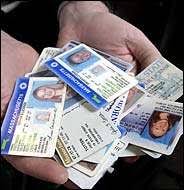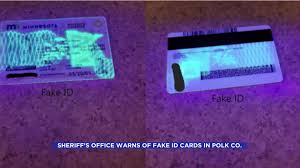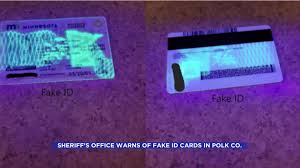counterfeit identification
Introduction
The problem of counterfeit goods has evolved into a sophisticated global concern. From luxury items to pharmaceuticals, counterfeit products pervade industries, posing significant risks to both brands and consumers. With billions of dollars lost annually due to counterfeiting, businesses are investing in advanced counterfeit identification technologies to protect their products, maintain consumer trust, and safeguard their bottom line.
In this comprehensive guide, we will explore the nuances of counterfeit identification, including key product features, market trends, and the importance of authenticity verification in today’s world. By the end of this article, you'll have a deep understanding of why counterfeit identification is more critical than ever and how innovative solutions are helping industries combat this pervasive issue.
Chapter 1: The Growing Challenge of Counterfeiting
1.1 The Global Impact of Counterfeiting
Counterfeiting is not a new problem, but the scale and complexity of fake goods have dramatically increased in recent years. The International Chamber of Commerce (ICC) estimates that by 2022, counterfeit goods will account for over $4.2 trillion in lost revenue globally. Industries like fashion, electronics, pharmaceuticals, and even food and beverages are especially vulnerable. This rise in counterfeit products can damage a brand’s reputation, erode consumer trust, and even pose serious health risks in cases where counterfeit pharmaceuticals or medical devices are involved.
The rise of e-commerce has further exacerbated the challenge, making it easier for counterfeiters to reach unsuspecting customers across the globe. This growing threat necessitates a robust response—one that includes cutting-edge counterfeit identification technologies.
1.2 Understanding the Counterfeit Supply Chain
Counterfeiting is a highly organized and adaptable crime, often facilitated by weak points in the global supply chain. From manufacturing to distribution, any lapse in product oversight can be exploited by counterfeiters. Understanding the counterfeit supply chain is key to developing strategies that prevent fake goods from reaching the market.
Chapter 2: Defining Counterfeit Identification
2.1 What is Counterfeit Identification?
Counterfeit identification refers to the process of detecting and verifying the authenticity of products to ensure they are not fraudulent replicas. This can involve a variety of technologies and techniques, from traditional physical examination methods to more advanced digital solutions.
At its core, counterfeit identification aims to distinguish genuine products from fake ones, providing assurance to consumers and businesses that the goods in question meet quality and safety standards.
2.2 Importance of Authentication
Authentication is a fundamental aspect of counterfeit identification. By confirming a product’s authenticity, businesses can protect their brand reputation and consumers can have peace of mind that they are purchasing genuine items. Authentication involves verifying unique product characteristics—such as materials, design features, or serial numbers—that counterfeiters often fail to replicate accurately.
Chapter 3: Modern Technologies in Counterfeit Identification
3.1 Anti-Counterfeiting Technologies: An Overview
Technological advancements have introduced several highly effective tools for detecting counterfeit goods. These technologies span multiple fields, from digital to material-based methods. Some of the most widely used anti-counterfeiting technologies include:
Holographic Labels: Widely used in industries like fashion and pharmaceuticals, these labels are difficult to replicate due to their complex visual patterns.
RFID (Radio Frequency Identification) Tags: RFID tags allow businesses to track products throughout the supply chain, making it easier to verify their authenticity at every stage.
Blockchain Technology: Blockchain can provide an immutable record of a product’s journey from manufacturer to consumer. This transparency ensures that each product can be traced back to its origin, preventing counterfeiters from infiltrating the supply chain.
Optical Variable Devices (OVD): These devices, such as 3D holograms, offer high levels of security due to their complexity. They are difficult to replicate and are used in sectors where visual verification is critical.
3.2 Machine Learning and Artificial Intelligence in Counterfeit Detection
In recent years, artificial intelligence (AI) and machine learning have revolutionized counterfeit identification. AI systems can analyze vast amounts of data to detect subtle differences between authentic and counterfeit products. Machine learning models can be trained to recognize specific characteristics of authentic products, such as logos, colors, and textures, making it more difficult for counterfeit goods to pass undetected.
This is particularly useful in e-commerce, where images of products are often the only form of verification before purchase. AI-powered tools can automatically scan product listings to identify counterfeit items, reducing the risk of fake goods being sold to consumers.
3.3 The Role of IoT (Internet of Things) in Enhancing Product Security
IoT technology is transforming the way businesses track and authenticate products in real-time. By embedding IoT sensors into products, companies can monitor them as they move through the supply chain. These sensors can communicate data about the product’s origin, location, and condition, ensuring its authenticity is preserved throughout its journey to the consumer.
Chapter 4: Features of a Robust Counterfeit Identification System
4.1 Key Characteristics of Effective Systems
A robust counterfeit identification system should be:
Scalable: The system should be able to adapt to the growing complexity of global supply chains and the increasing volume of goods.
Cost-effective: While security is a priority, the solution should not be prohibitively expensive to implement.
User-friendly: Both consumers and businesses should find the solution easy to use, whether it involves scanning a QR code or checking for visual indicators of authenticity.
Tamper-proof: Security features should be resistant to tampering, ensuring that they cannot be easily replicated or removed by counterfeiters.
4.2 Tailored Solutions for Different Industries
Counterfeit identification solutions are not one-size-fits-all. Each industry has its unique challenges and risks when it comes to counterfeiting. For instance, the fashion industry may rely heavily on holographic labels and RFID tags, while the pharmaceutical industry prioritizes tamper-evident packaging and blockchain technology to maintain product integrity.
Solutions should be customized to meet the specific needs of the industry, ensuring that they address the most relevant threats.
Chapter 5: Market Analysis and Growth of Counterfeit Identification Solutions
5.1 The Expanding Anti-Counterfeiting Market
The global anti-counterfeiting market is expected to see substantial growth in the coming years. According to industry reports, the market is projected to reach over $250 billion by 2025. This growth is driven by increasing awareness of the dangers posed by counterfeit goods, as well as stricter regulations that demand businesses take action to protect consumers.
The rise in e-commerce has also fueled the demand for counterfeit identification solutions. With more products being sold online, businesses need to ensure that their goods are protected against fraudulent copies.
5.2 Key Players in the Industry
The market for counterfeit identification technologies is competitive, with several key players offering innovative solutions. Leading companies in the field include:
Avery Dennison: Known for its RFID and digital authentication solutions, Avery Dennison is a major player in product security.
SICPA: A Swiss company that specializes in secure authentication, SICPA provides solutions for both government and private sectors, including ink-based security features for currency and products.
Authentix: This company offers a wide range of authentication solutions, from chemical markers to digital systems.
OpSec Security: OpSec provides a combination of physical and digital anti-counterfeiting technologies for industries like fashion, automotive, and government.
Chapter 6: Target Audience for Counterfeit Identification Products
6.1 Businesses and Manufacturers
The primary audience for counterfeit identification solutions is businesses and manufacturers that are vulnerable to counterfeit risks. These companies invest heavily in anti-counterfeiting technology to protect their brand, maintain product integrity, and comply with regulatory standards.
For industries like pharmaceuticals and automotive parts, counterfeit goods can pose serious safety risks. Manufacturers in these sectors require comprehensive solutions to ensure that their products are safe, genuine, and reliable.
6.2 Consumers
Consumers are increasingly demanding ways to verify the authenticity of the products they purchase. Whether buying luxury goods, electronics, or pharmaceuticals, consumers want assurance that the items they invest in are legitimate. Counterfeit identification systems that offer easy-to-use tools, like QR codes or mobile apps for verification, are gaining popularity among consumers who value transparency and security.
6.3 Governments and Regulatory Bodies
Governments play a critical role in enforcing anti-counterfeiting laws and standards. Regulatory bodies are increasingly adopting counterfeit identification technologies to crack down on illegal goods entering the market. These systems help ensure compliance with regulations and protect consumers from potentially dangerous fake products.
Chapter 7: Strategies for Successful Counterfeit Identification Implementation
7.1 Integrating Technology Across the Supply Chain
One of the key strategies for successful counterfeit identification is integrating technology at every stage of the supply chain. From manufacturing to retail, companies should implement security features that can be easily verified at multiple checkpoints. This holistic approach ensures that products maintain their authenticity throughout their entire journey to the consumer.
7.2 Consumer Education and Awareness
Educating consumers about the risks of counterfeit goods is essential for the success of counterfeit identification systems. When consumers understand the dangers of buying fake products, they are more likely to seek out ways to verify authenticity before making a purchase.
Brands can play an important role in raising awareness through advertising campaigns, product packaging, and social media. By making consumers part of the solution, businesses can build trust and reduce the demand for counterfeit goods.
7.3 Collaboration Between Stakeholders
Successful counterfeit identification requires collaboration between multiple stakeholders, including businesses, governments, technology providers, and consumers. When these groups work together, they can create a comprehensive ecosystem that reduces the spread of counterfeit goods.
Conclusion: The Future of Counterfeit Identification
As counterfeiters continue to evolve, so must the strategies and technologies used to combat them. The future of counterfeit identification lies in the integration of advanced technologies like AI, blockchain, and IoT. These innovations are already transforming the way businesses protect their products, and as they become more widespread, the ability to detect and prevent counterfeit goods will only strengthen.
Investing in counterfeit identification is no longer optional—it’s a necessity for businesses that want to protect their brand, their customers, and their bottom line. By staying ahead of counterfeiters, companies can ensure that authenticity is always guaranteed.
 security features
security features
 What should ISS be on a fake I
What should ISS be on a fake I
 Utah driver's license
Utah driver's license
 customized fake IDs
customized fake IDs
 target audience for fake IDs
target audience for fake IDs
 counterfeit identification
counterfeit identification
 fake ID laws
fake ID laws
 Fake University Cards
Fake University Cards
